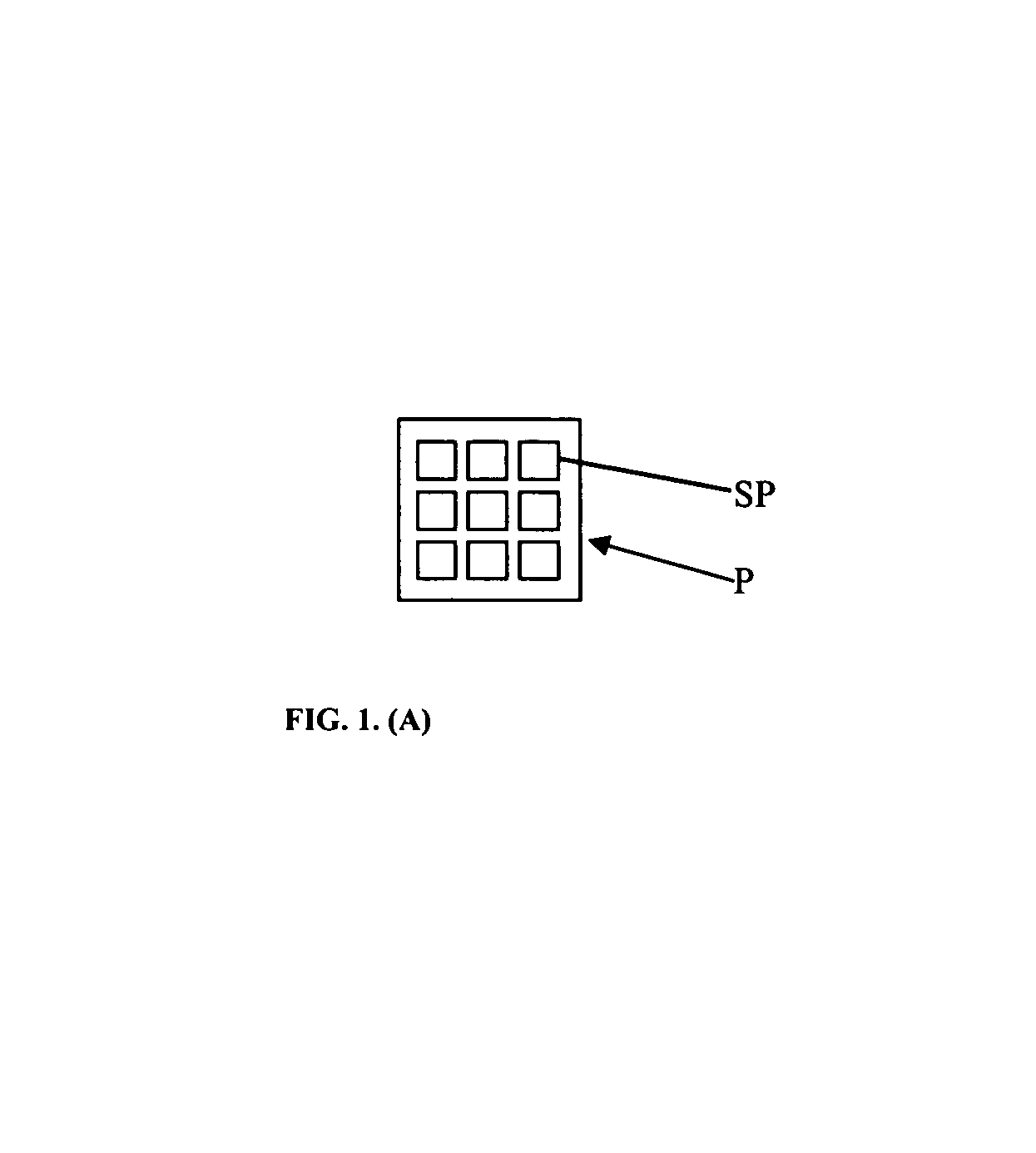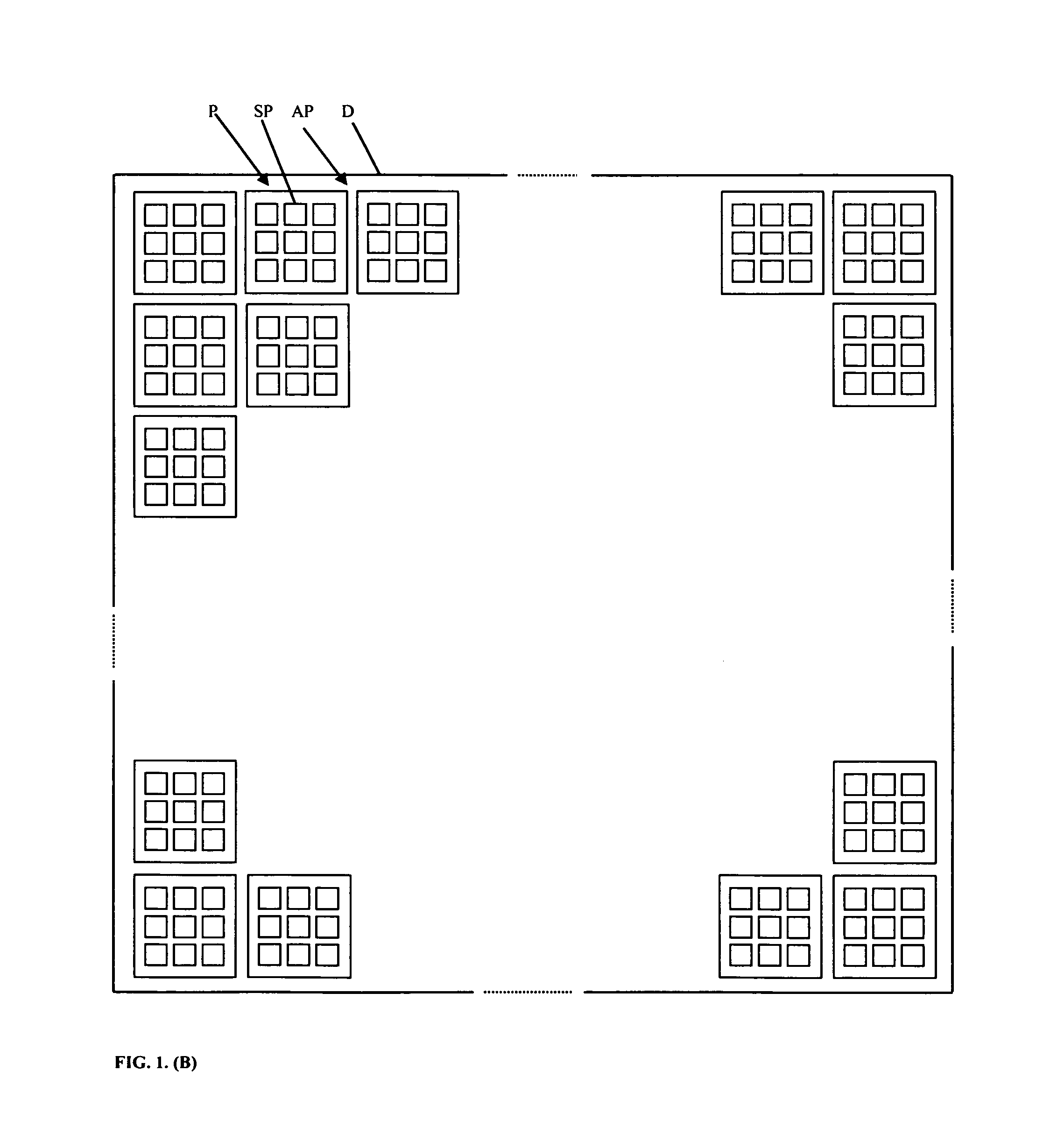Three-dimensional autostereoscopic display and method for reducing crosstalk in three-dimensional displays and in other similar electro-optical devices
a three-dimensional display and display technology, applied in the field of three-dimensional (3d) autostereoscopic displays and other similar electrooptical devices, can solve the problems of autostereoscopic displays currently available on the market, and achieve the effects of reducing resolution, reducing resolution, and increasing the size of grating cells in the illuminating screen
- Summary
- Abstract
- Description
- Claims
- Application Information
AI Technical Summary
Benefits of technology
Problems solved by technology
Method used
Image
Examples
Embodiment Construction
Brief Description of the Drawings
[0010]FIG. 1. (A): One pixel in display: P—Pixel ; SP—Subpixel (Front view).
[0011]FIG. 1. (B): Display (shown partially). D—Display; P—Pixel ; SP—Subpixel ; AP—Entire array of pixels in said display (Front view).
[0012]FIG. 2. IS—Illuminating Screen ; M—Non-transparent mask ; TVW—Time-variable window ; K—Direction of movement of the Time-variable window. (It is not necessary to activate the entire Illuminating screen for this particular position of the TVW—only down to the dotted line).
[0013]FIG. 3.: One pixel in display: P—Pixel ; H—Hole with micromirror (Front view).
[0014]FIG. 4.: Side view of one row of subpixels in FIG. 3. (cross-section): MM—Micromirror; AM—Active Mask ; PM —Passive mask; BP—Beam Preprocessor; CPA—Common Pixel Aperture; CPOC—Common Pixel Optical Component; II—Incident Illuminating light ray; AI—Light ray at the output of BP ; RIR—Reflected Illuminating light ray.
[0015]FIG. 5.: Beam Preprocessor (used in FIG. 4.): BP—Beam Preproce...
PUM
| Property | Measurement | Unit |
|---|---|---|
| size | aaaaa | aaaaa |
| size | aaaaa | aaaaa |
| size | aaaaa | aaaaa |
Abstract
Description
Claims
Application Information
 Login to View More
Login to View More - R&D
- Intellectual Property
- Life Sciences
- Materials
- Tech Scout
- Unparalleled Data Quality
- Higher Quality Content
- 60% Fewer Hallucinations
Browse by: Latest US Patents, China's latest patents, Technical Efficacy Thesaurus, Application Domain, Technology Topic, Popular Technical Reports.
© 2025 PatSnap. All rights reserved.Legal|Privacy policy|Modern Slavery Act Transparency Statement|Sitemap|About US| Contact US: help@patsnap.com



